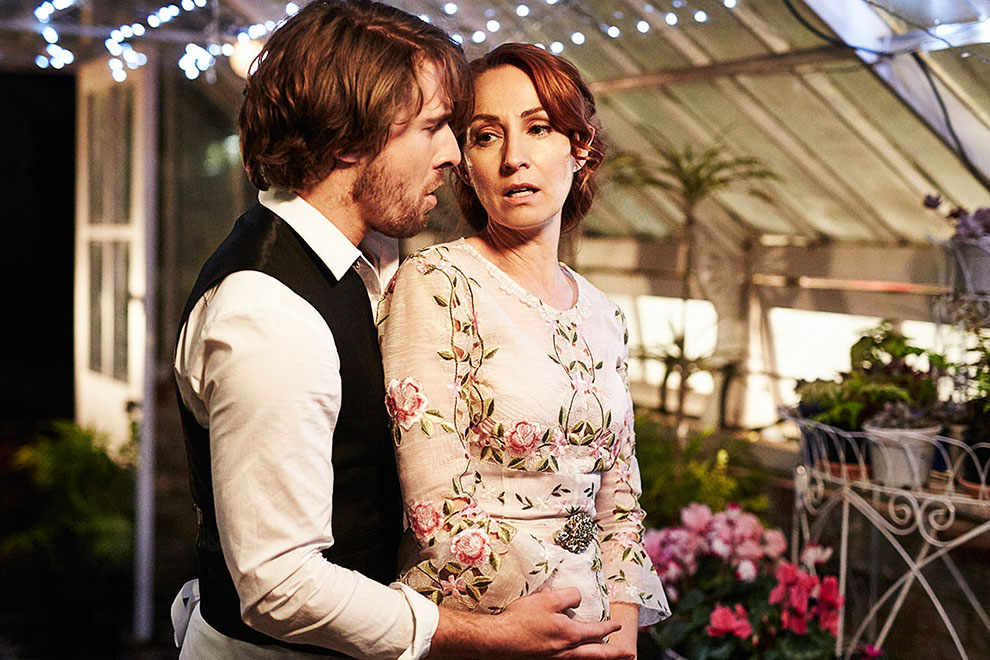In the days following last month’s broadcast of Elena Kats-Chernin and Joanna Murray-Smith’s four-part television opera, The Divorce, I read a good deal of negative criticism online. Much of it was surprising.
The world of social media is a bit like a school playground, and you quickly learn who are the loudmouths and bullies. Most of the time you can take your mother’s advice: ignore them and they’ll go away. But many of those making disparaging remarks about The Divorce were not your standard-issue trolls. The writers had initially been sympathetic to the project; they were admirers of Kats-Chernin and some had even played her music. The tone of the criticism was thoughtful and regretful, but it was trenchant too. I was quite shocked by some of the remarks from generally mild-mannered musical friends. I had enjoyed The Divorce, even if it was not what I’d expected.
Opera on the telly has had a bumpy history, and may broadly be divided into three sorts of enterprise. The simplest manifestation is where you take cameras into an opera theatre and point them at the stage. This used to happen quite a lot, many a Sunday night on the ABC featuring season highlights from the Sydney Opera House. But it’s been a while, and I imagine a more generously funded public broadcaster would be necessary to bring it back (so forget that). There have also been opera productions designed for TV and shot in a studio. Famous examples include the BBC’s productions of Britten’s Peter Grimes and Billy Budd. Their success led to the third sort of TV opera – in Britten’s case, it was Owen Wingrave – which is specifically written for the small screen. Other examples include Menotti’s Amahl and the Night Visitors, once a staple of the Christmas television schedule, and Stravinsky’s The Flood, commissioned by CBS for a prime-time slot in 1962. Twenty years later, the ABC commissioned Peter Sculthorpe’s Quiros to mark its fiftieth anniversary. Those were the days.
Except that it seems these, too, are the days. Kats-Chernin and Murray-Smith’s opera was broadcast in prime time and over four nights, what’s more; and while it might have been an Opera Australia initiative rather than an idea of the ABC’s, it was a lavish production. When it comes to presenting new work, Opera Australia’s artistic director, Lyndon Terracini, has attracted criticism in his relatively short tenure with the company, some of it justified, but I believe he deserves only plaudits for having dreamt up The Divorce.
The production was designed to function like serial soap, half-hour episodes drawing the audience back night after night, but the story itself was pure opera, its most obvious model The Marriage of Figaro. A famous couple is divorcing. Since they remain on good terms, they throw a lavish party for their friends, and this is where the action takes place, involving coincidence, misunderstanding, intrigue and a tangled web of relationships across generations and classes. It is not only Figaro, but Commedia dell’arte, A Midsummer Night’s Dream and the farces of Georges Feydeau. Echoes of Schnitzler’s La Ronde are also in there somewhere, and so is Bergman’s Smiles of a Summer Night and the musical it inspired, Sondheim’s A Little Night Music.
Kats-Chernin’s music owes more to Sondheim than Mozart, and much of the criticism I saw hinged on the perception that The Divorce wasn’t really an opera at all. I disagree. Clearly, it wasn’t operatic, but that is not the same thing. The cast of singing actors (among them Lisa McCune, Marina Prior and Kate Miller-Heidke) tailored their vocal delivery to the intimate medium of TV; some of the dialogue was spoken, most of it was sung, and the music was practically continuous. If your definition of opera involves wall-to-wall music, then The Divorce is more an opera than The Magic Flute.
Which is not to say it was perfect. The fast tempo of the production was attractive, televisual and very much helped by the music, some of it background party music ranging from bossa nova to pounding electronica. In insisting on pace, however, the production missed the chance for big musical numbers. It was a deliberate choice on the composer’s part, but opera is predominantly a musical form – there are some great operas with average libretti, none with average music – and The Divorce needed real “arias,” moments where a song was given the time completely to take over and reveal emotional layers that this production could only hint at. Murray-Smith’s acerbically funny text was perhaps too wordy, but then so is the libretto Auden and Kallman wrote for The Rake’s Progress, and Stravinsky found a way. For the most part, so too did Kats-Chernin, though since her first language isn’t English, there were a few odd stresses in her musical setting that made comprehension difficult. That was true of Stravinsky, too.
But The Divorce was above all a bold initiative and one that I felt came off. Moreover, the first episode was watched by 247,000 people, which might not be much in terms of national television ratings, but is a hell of a lot for the opening night of an opera. I hope this is the beginning of a series of similar initiatives, exploring different stories and different musical approaches to them. •




